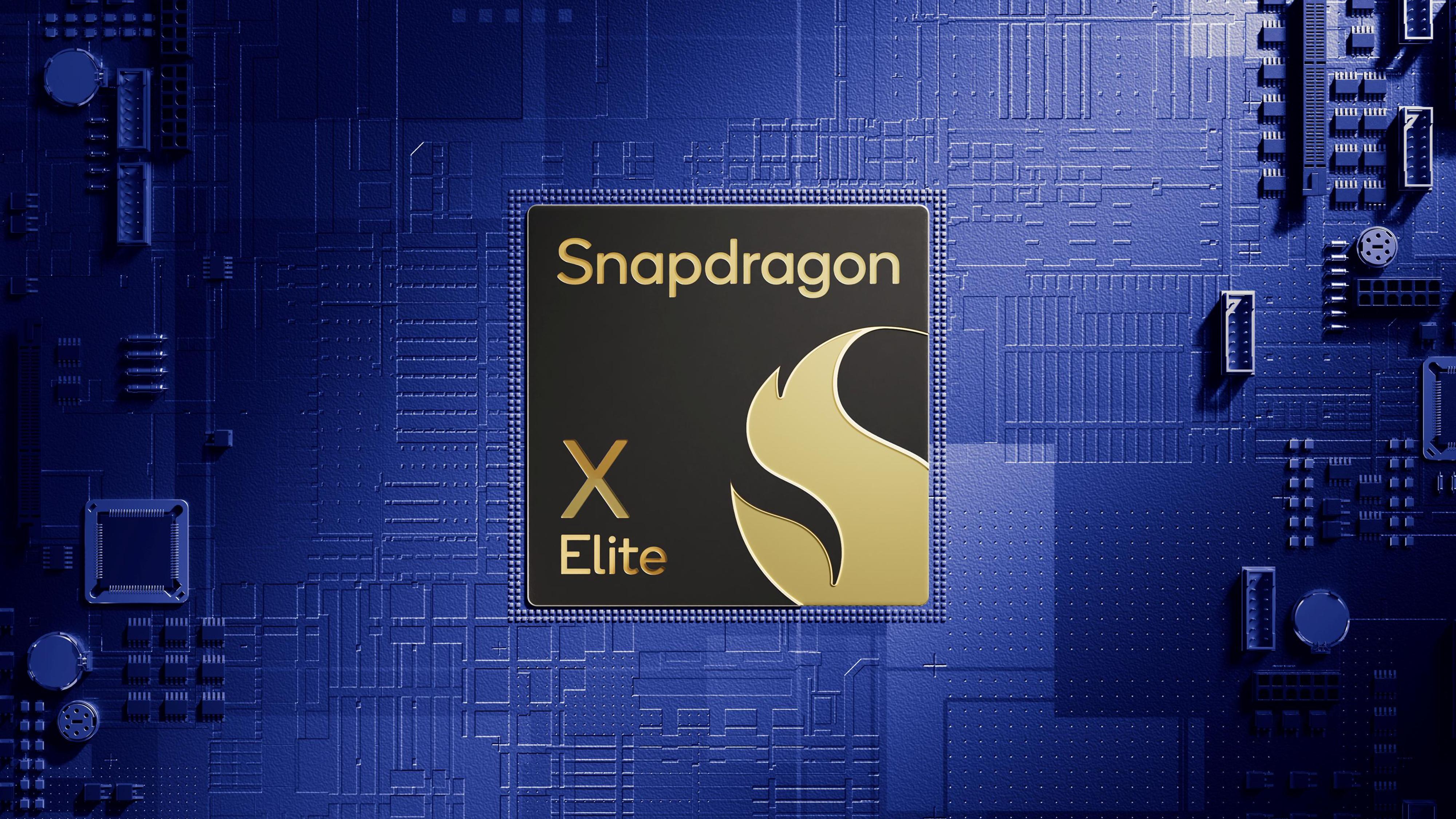Qualcomm says its Oryon CPU cores have 1% or less of Arm's original technology — cores in Snapdragon X PC chips are almost entirely custom
Lawyers grill ex-Apple chip designer in Arm vs Qualcomm trial.

The Qualcomm Oryon general-purpose cores found inside Snapdragon X processors are based on Arm's Armv8 instruction set architecture (ISA), but they use very little technology developed by Arm, says Gerard Williams III, one of the lead developers behind Oryon and a variety of Apple's processors.
"One percent or less," said Williams when asked to estimate the amount of Arm technology in the final design developed by Nuvia. The news came in a new report from Reuters.
Qualcomm's Oryon originates from Nuvia, a company that Gerard Williams III co-founded with his partners in 2019. Nuvia's original focus was to design high-performance, energy-efficient CPU cores (codenamed Phoenix) for datacenters.
The partners acquired two non-transferrable licenses from Arm: the Technology License Agreement (TLA) and Architecture License Agreement (ALA), the former to rework its existing cores and the latter to design custom cores. Since the goal was always to go with custom cores, the team developed its cores from scratch without using Arm's physical IP, or at least using very little of it.
Indeed, licensees of Arm's ISA can design proprietary microarchitecture designed from scratch, so long as it correctly implements Arm’s instructions. Because Nuvia's engineers designed their own pipelines, execution units, cache systems, and other CPU internals, the final core did not incorporate Arm's proprietary circuit blocks or off-the-shelf designs. As a result, while Nuvia's cores are Armv8 cores, they probably share very little of the actual 'Arm-designed' technology beyond the instruction set and baseline specifications.
After Nuvia was acquired by Qualcomm in 2021 for $1.4 billion. Qualcomm said that Nuvia's cores will (at least initially) be used for PCs rather than for datacenters, Arm asked Qualcomm to renegotiate the terms of the license, something that Qualcomm refused to do asserting that its own ALA covers its subsidiary Nuvia.
Arm claimed that Qualcomm breached its agreement by failing to renegotiate the licensing terms following the Nuvia acquisition. As a result, Arm demanded that Qualcomm to destroy all Nuvia designs developed prior to the merger. In 2022, Arm took further action by revoking Nuvia's licenses and this October it informed Qualcomm of the termination of its Architecture License Agreement (ALA).
The current legal dispute between Arm and Qualcomm is about whether Nuvia's architecture license and the custom designs derived from it could be transferred or used by Qualcomm following its acquisition of Nuvia. Arm's attorney emphasized the explicit terms of the licensing agreement, pressing Williams to admit the contract defined everything that resulted from Nuvia's work as 'derivatives' or Arm's TLA. Meanwhile, Qualcomm's attorney directed Williams to elaborate on Nuvia's innovations and the limited role Arm's TLA played in its development.
Get Tom's Hardware's best news and in-depth reviews, straight to your inbox.
The jury's decision that is expected soon could define the future of licensing practices and IP ownership in the semiconductor industry.

Anton Shilov is a contributing writer at Tom’s Hardware. Over the past couple of decades, he has covered everything from CPUs and GPUs to supercomputers and from modern process technologies and latest fab tools to high-tech industry trends.
-
dCasualGamer ReplyPierce2623 said:The concept that any chip using Aarch64 is only 1% ARM technology is ludicrous.
yeah, i agree.. What is being licensed is the instruction set with ARM providing a baseline (or reference design). A company modifying an baseline design does not get to claim it to be "its own". -
JamesJones44 Reply
Reading the main article, I believe the quote is in reference to base ARM reference designs, for which that is at least conceivable.Pierce2623 said:The concept that any chip using Aarch64 is only 1% ARM technology is ludicrous. -
usertests Reply
I can imagine a very tortured definition of original/custom to get there. Like they shifted some design elements around, used a different amount of cache than the default, etc.Pierce2623 said:The concept that any chip using Aarch64 is only 1% ARM technology is ludicrous. -
thestryker The Nuvia core designs likely have nothing to do with Arm's designs. That would be like saying Granite Ridge and Cypress Cove are the same because they have the same instruction sets. I'd imagine the Nuvia cores probably have more in common with the Apple's Firestorm cores than anything Arm designs.Reply
Arm seems to be banking entirely on >0 = ours to control. Perhaps that's how their licensing agreements are written, but if that holds up it seems extremely dangerous for their long term survival. -
Steve Nord_ Like seriously, the compiler only happens to work using ARM64 ASM because of our patches, it's crazy in there. We're a rhythm game with AVX2 extensions.Reply -
OneMoreUser Reply
I think you're imagination is playing tricks on you. The way a CPU is designed makes for there being many ways to optimize and do things ie. just like baking a cake, there is many ways to make one including many ingredients to chose from and you still can end up with a cake.usertests said:I can imagine a very tortured definition of original/custom to get there. Like they shifted some design elements around, used a different amount of cache than the default, etc. -
Pierce2623 Reply
Well, the main point I’m making that I guess is somewhat difficult to understand without being a total nerd is that Aarch64 based chips are technologically tighter integrated with the ISA than x86 chips. Also it’s very different from the current situation in x86 where AMD has contributed almost as much as Intel over time. Aarch64 is an ecosystem fully owned by ARM built for their technological benefit. It’s simply not legal for a massive multinational to buy out a small startup and take over license terms only offered as a helping hand to small startup companies and then on top of that, use that license to sell products outside the market the license applied too. Then on top of that, Qualcomm is trying to now sell their cellphone chips under that license too. No judge is going to let Qualcomm get away with this. Qualcomm is going to owe ARM at least a hundred million dollars before this is all said and done.thestryker said:The Nuvia core designs likely have nothing to do with Arm's designs. That would be like saying Granite Ridge and Cypress Cove are the same because they have the same instruction sets. I'd imagine the Nuvia cores probably have more in common with the Apple's Firestorm cores than anything Arm designs.
Arm seems to be banking entirely on >0 = ours to control. Perhaps that's how their licensing agreements are written, but if that holds up it seems extremely dangerous for their long term survival. -
bit_user Reply
What he's talking about is the actual chip design. So, the TLA would've given Nuvia access to the "source code" of ARM's in-house designed cores and allowed Nuvia to copy-and-paste parts of this source code into their own designs. What he's saying is that less than 1% of Nuvia's chips consist of copy-and-pasted source code from ARM.Pierce2623 said:The concept that any chip using Aarch64 is only 1% ARM technology is ludicrous.
The Architecture License Agreement is what defines the ISA and system architecture, some of which is patented. The purpose of the ALA is simply to let them make a compatible implementation. If the ALA is the only thing you have, then you need to come up with 100% of the source code (either in-house, or maybe you can license generic stuff like memory controllers from someone like Synopsis).
The difference between the two is essential one of copyrights vs. patents. The TLA gives them access to copyright IP, while the ALA just gives them the rights to use the patents. -
bit_user Reply
Copyright law defines this as a derivative work. You can't simply take a copyrighted poem, toggle the capitalization of every letter, and then claim it as an original work. Even though you touched every single letter, making it a non-verbatim copy, it's still a derivative work.usertests said:I can imagine a very tortured definition of original/custom to get there. Like they shifted some design elements around, used a different amount of cache than the default, etc.